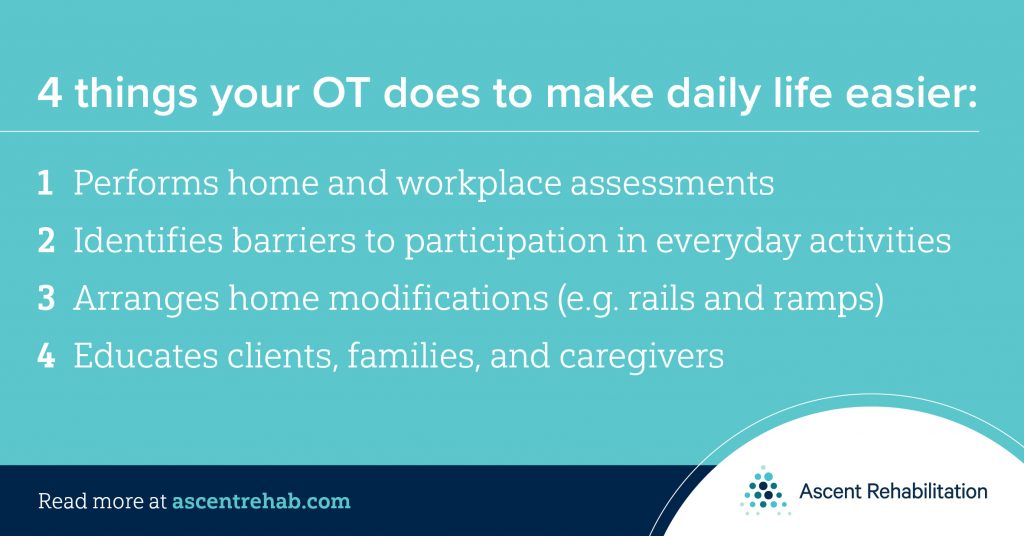Occupational Therapy in Action: Supporting Occupational Rehabilitation and Return to Work in the ACT

October marks Occupational Therapy (OT) Month, and the theme for this year, Occupational Therapy in Action, invites us to celebrate the creativity, problem-solving, and compassion that define OT practice. OT Week 2025 (27 October to 2 November) is a time to recognise the profound impact Occupational Therapists have in helping individuals live with independence, dignity, and participation (Occupational Therapy Australia, n.d.).
OTs play a vital role for clients across the lifespan and in various areas of life, including Occupational Rehabilitation. In this context, OTs support individuals to regain function, confidence, and independence, ultimately facilitating a timely, safe, and sustainable return to work following an injury or illness. Their expertise ensures workers are not only physically ready, but also psychologically and functionally prepared to resume meaningful employment (Comcare, 2021).
The Role of an OT in Occupational Rehabilitation
OTs in Occupational Rehabilitation focus on enabling individuals to return to their pre-injury capacity or adapt effectively to new roles when full recovery is not possible. The scope of OT involvement includes:
- Functional Assessment
Occupational Therapists conduct comprehensive evaluations of physical, cognitive, and psychosocial abilities relevant to the individual’s job role (Kielhofner, 2008). This includes Functional Capacity Evaluations (FCEs), and the identification of barriers to return to work (RTW), such as reduced mobility, pain, psychological concerns (e.g. anxiety or low confidence), and environmental factors such as non-ergonomic equipment or tools (MyCareSpace, n.d., 2025). - Graded Rehabilitation Programs
Tailored rehabilitation plans are developed, incorporating physical reconditioning, ergonomic strategies, and energy conservation techniques (Shepherd, 2015). Work-simulation tasks are implemented to gradually build task tolerance and readiness for workplace demands. - Workplace Assessment and Modification
Onsite evaluations of job tasks, workplace ergonomics, and environmental factors are conducted to ensure safe participation (Safe Work Australia, 2020). Recommendations may include adaptive equipment, task modifications, or alternative duties to support a safe and sustainable return to work. - Psychosocial Support
OTs address the mental health impacts of injury, including stress, adjustment difficulties, and reduced self-efficacy (Waddell & Burton, 2006). They promote resilience, coping strategies, and confidence-building to support sustained work engagement and wellbeing. - Collaboration with Stakeholders
OTs address the mental health impacts of injury, including stress, adjustment difficulties, and reduced self-efficacy (Waddell & Burton, 2006). They promote resilience, coping strategies, and confidence-building to support sustained work engagement and wellbeing.
Return-to-Work in the ACT Context
Canberra’s workforce is diverse, encompassing government agencies, healthcare, education, defence, and professional services. Occupational Therapists tailor interventions to meet the unique demands of these varied work environments:
- Office-based roles: Ergonomic workstation assessments, fatigue management strategies, and graded return-to-work (RTW) schedules.
- Healthcare and frontline roles: Safe manual handling retraining, adaptive equipment recommendations, and task rotation strategies.
- Trades and manual work: Functional capacity assessments, strengthening programs, and structured task exposure to build endurance.
These targeted interventions help individuals transition back into the workplace safely, efficiently, and in alignment with organisational requirements.
The Impact of an OT in Occupational Rehabilitation
Evidence demonstrates that early Occupational Therapy involvement leads to:
- Reduced duration of work absence (Waddell & Burton, 2006).
- Lower risk of re-injury (Safe Work Australia, 2020).
- Improved functional and psychosocial outcomes (Shepherd, 2015).
- Enhanced employer confidence in the individual’s readiness to return (Comcare, 2021).
From a practical perspective, Occupational Therapists also support cost savings for organisations and insurers by reducing lost productivity and compensation expenses.
Conclusion
Occupational Therapists are a cornerstone of Occupational Rehabilitation, bridging the gap between medical treatment and workplace reintegration. Through holistic assessment, tailored rehabilitation, and strong collaboration with stakeholders, OTs work as part of a multidisciplinary team to ensure individuals return not just to work, but to meaningful, sustainable, and productive employment. Their role reinforces the principle that good work is good for health, and that with the right support, recovery and participation are achievable for all.
References
- Comcare. (2021). Return to work best practice guide. Australian Government.
- Kielhofner, G. (2008). Model of human occupation: Theory and application. Lippincott Williams & Wilkins.
- MyCareSpace. (n.d.). What is an NDIS functional capacity assessment? Retrieved from https://mycarespace.com.au/resources/what-is-an-ndis-functional-capacity-assessment#who-perform-fca
- Occupational Therapy Australia. (n.d.). OT Week 2025. Retrieved from https://otaus.com.au/ot-week-2025
- Safe Work Australia. (2020). Work-related musculoskeletal disorders in Australia. Canberra.
- Shepherd, J. (2015). Occupational rehabilitation: A practical approach. Routledge.
- Waddell, G., & Burton, A. K. (2006). Is work good for your health and well-being? The Stationery Office, UK.

